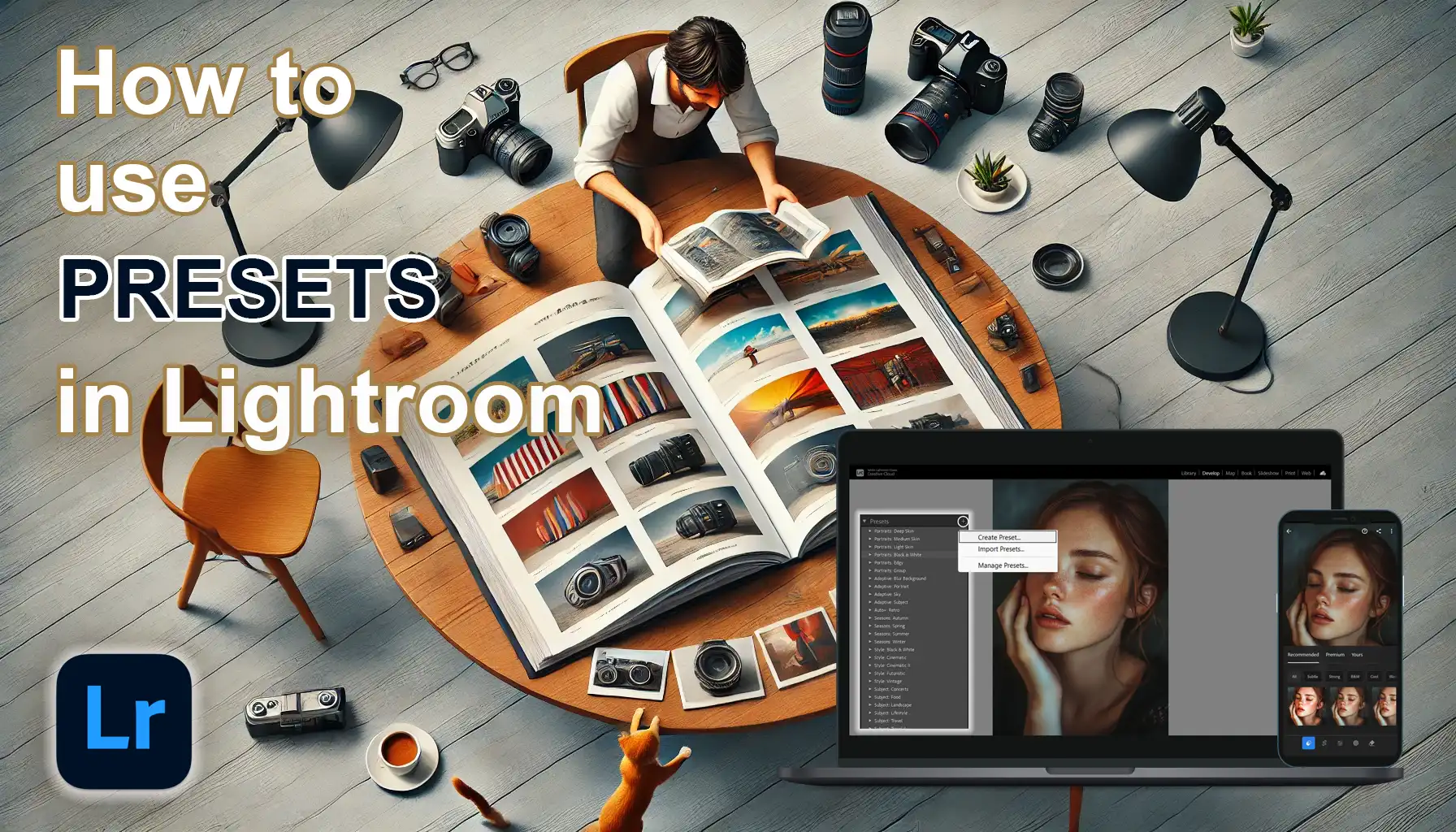
In this article, I’ll walk you through how to use presets in Lightroom to streamline your workflow and achieve stunning results with just a few clicks.
Whether you’re a seasoned photographer or just starting, presets can save you time and help you maintain a consistent style. Intrigued?
Let’s dive in and explore how these powerful tools can transform your images and simplify your editing process.
Table of Contents
How to Use Presets in Lightroom
Learning how to use presets in Lightroom can transform your photo editing process. With just a few clicks, you can apply stunning styles to your photos.
Follow this step-by-step guide to get started.
Step-by-Step Guide
Ready to streamline your photo refining? Let’s dive into how to use presets in Lightroom.
- Step 1: Open the Lightroom app.
- Step 2: Navigate to the Presets Panel. You'll find it on the right side. This panel is where your magic happens.
- Step 3: Upload presets by clicking the plus sign, then select Import Presets. Choose the preset packs or zip file you want to add.
- Step 4: After importing, locate your Lightroom presets under the Presets Tab or within a newly created Preset Group.
- Step 5: To apply a preset, open a photo and click on your desired preset from the Presets Panel.
Tips for Effective Use
Using Lightroom presets is not just about applying them; it’s about maximizing their effectiveness.
- Tip 1: Experiment with different presets. Don't be afraid to adjust sliders to match your style.
- Tip 2: Organize your Lightroom presets folder. Having a clean presets folder makes finding the right one faster.
- Tip 3: Back up your presets. Save them in a separate location or automatically sync them with your Lightroom mobile or desktop application.
- Tip 4: Use the develop presets folder for frequently used ones. This helps quickly adapt your editing style across projects.
Pro Tip: Consider investing in a good preset pack or a comprehensive Lightroom training guide to expand your creative tools. These can provide diverse looks that keep your edits fresh.
Installing Lightroom Presets
Installing Lightroom Presets can enhance your editing workflow quickly. Whether you’re on Lightroom Desktop or mobile, installing presets is a simple process that allows you to apply consistent styles to your photos in just a few clicks.
Install Lightroom Presets on Desktop
To install Lightroom presets on your desktop is straightforward. Follow these steps:
- Open the Adobe Lightroom Classic desktop app.
- Navigate to the Presets Menu on the right side of your screen.
- Click the "+" icon and and select "Import Presets."
- Choose your downloaded presets or a zip file containing them.
- Once imported, your presets appear under the Presets Tab or within a new Preset Group.
To apply a preset:
- Open any photo.
- Click on your desired preset from the Presets Panel.
Installing Presets on the Mobile Lightroom app
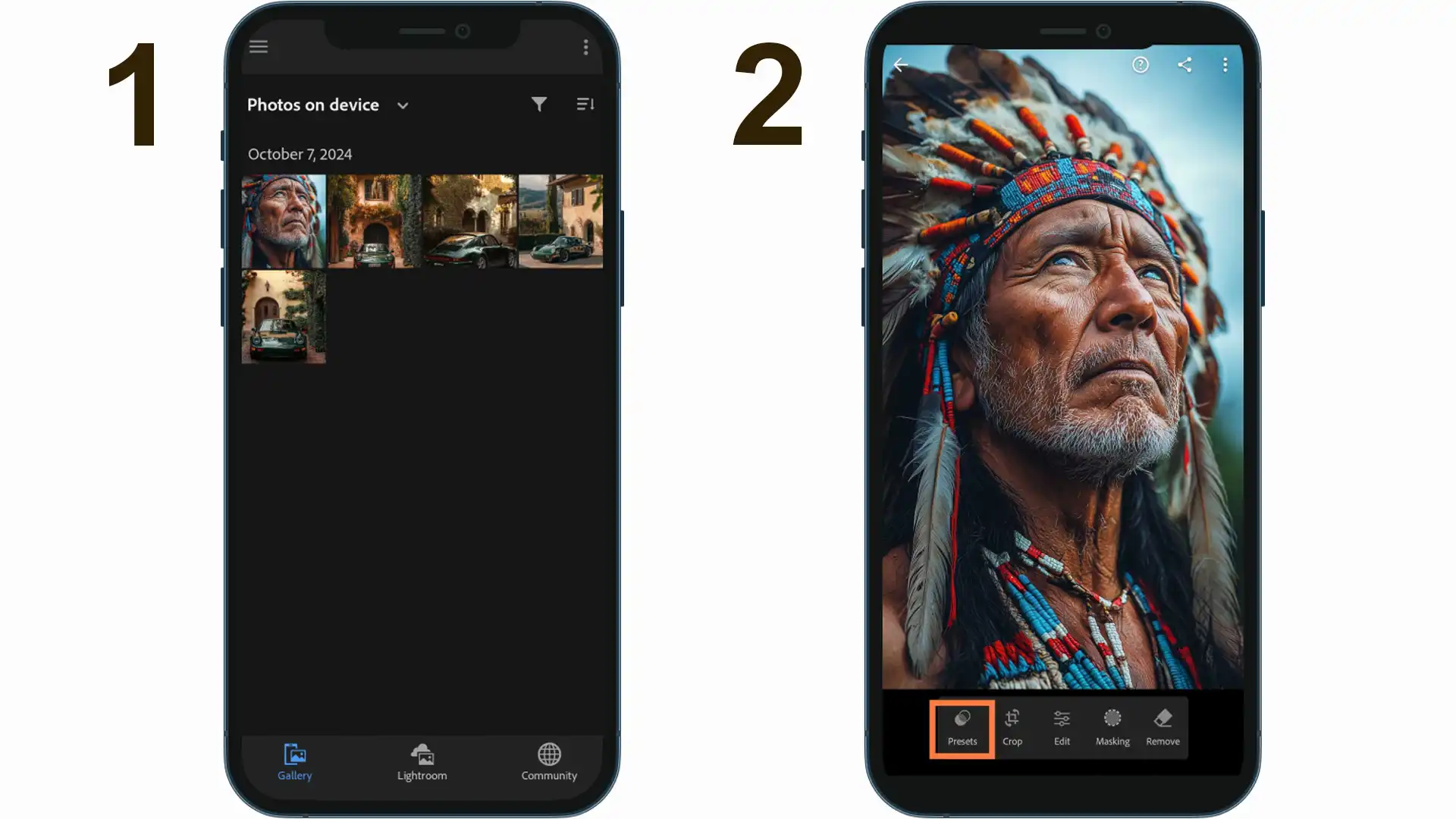
For the mobile version, follow these steps:
- Open the Lightroom mobile app.
- Navigate to the Presets section in Edit mode.
- Click the three dots in the top-right corner and choose "Import Presets."
- Select your preset packs, either .dng files or a zip file.
- Once imported, your presets appear in the Presets section under User Presets.
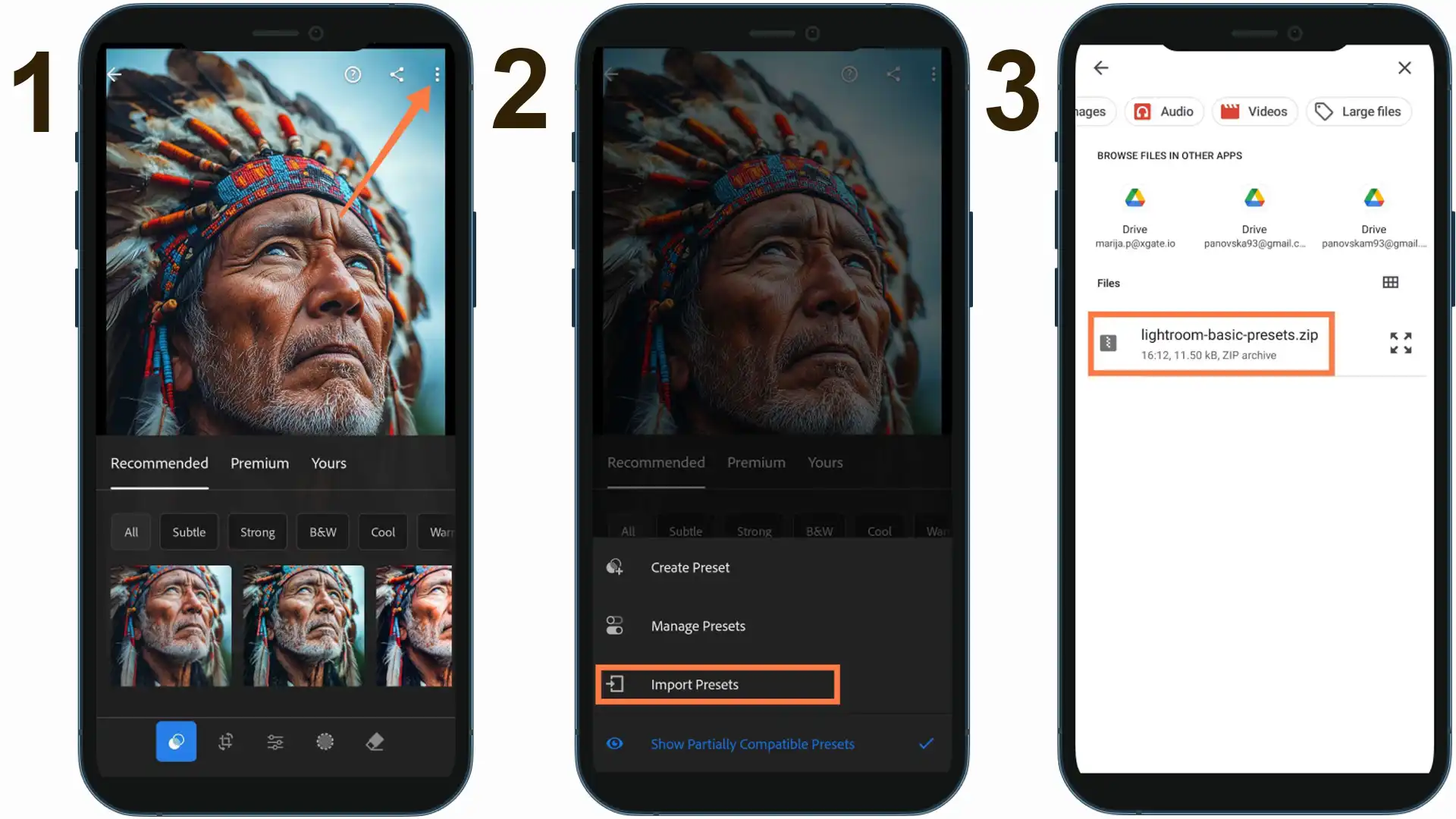
To apply a preset:
- Open an image.
- Tap on the chosen preset.
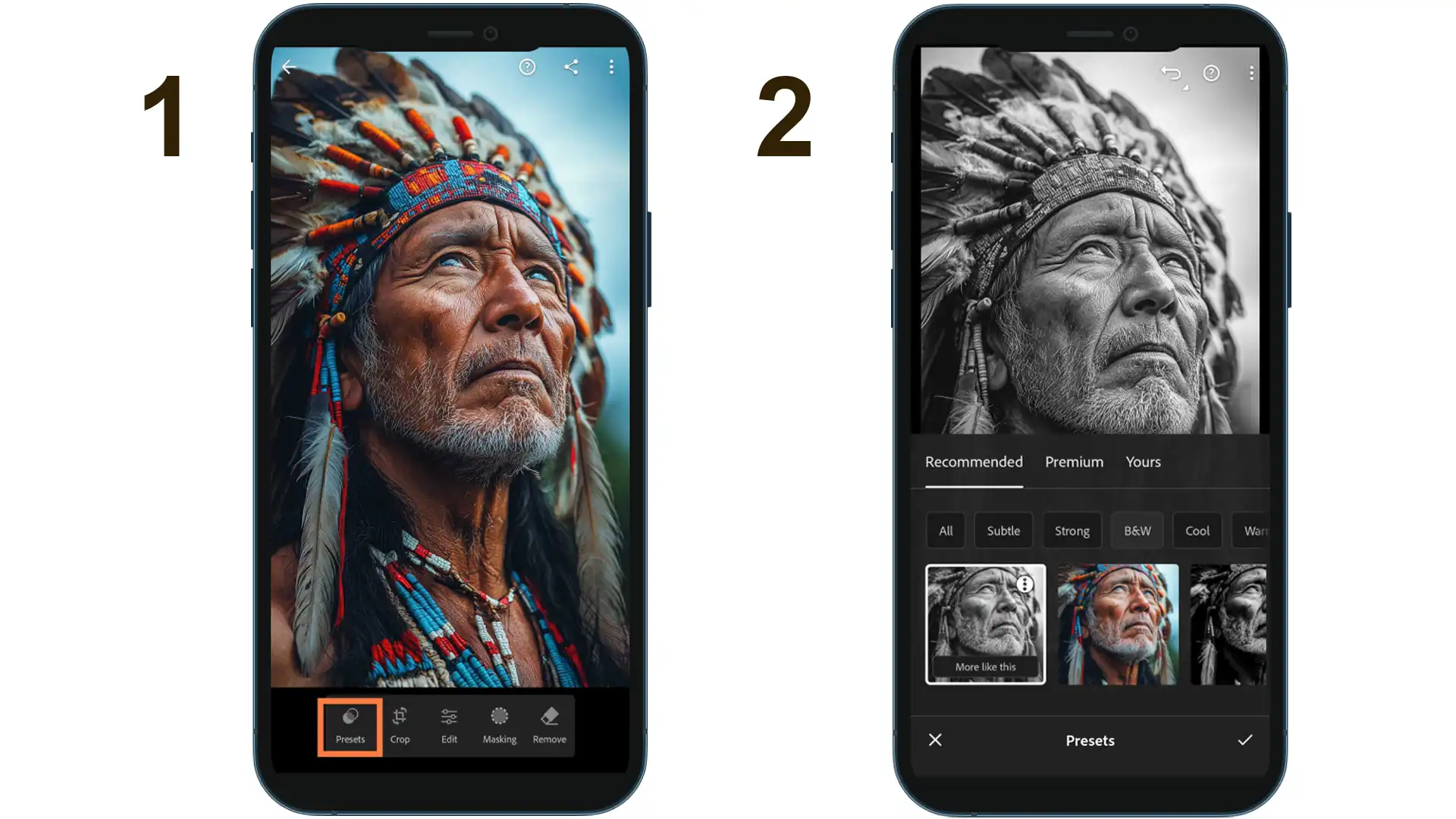
Tips for Effective Use
Here are some quick tips to help you make the most of your Lightroom presets and streamline your editing process:
- Experiment with different Lightroom presets to find the perfect fit.
- Organize your Lightroom folder for easy access.
- Back up your downloaded presets in a separate location or sync them with your mobile device.
- Use a develop presets folder for frequently used presets to speed up your workflow.
Pro Tip: Invest in a quality preset pack to expand your creative tools. Additionally, understanding the difference between Photoshop and Lightroom can help you decide which software to use for specific editing tasks.
Import Presets into Lightroom
Importing presets into Lightroom is simple, whether you have a zip file or lrtemplate preset files. This quick process allows you to bring in your favorite styles and start editing seamlessly on both the desktop and mobile apps.
Here’s a comparison of the different aspects of importing and using presets in Lightroom, both on desktop and mobile, to help streamline your editing process.
| Aspect | Overview |
|---|---|
| Importing Presets on Desktop | Open Lightroom Classic or Lightroom CC, navigate to the Presets tab, click the “+” sign, and import .xmp presets or a zip file. |
| Importing Presets on Mobile | In the Lightroom mobile app, navigate to the Presets section, tap the three dots, choose “Import”, and select dng files or a zip file. |
| Organizing Presets | Organize presets in folders within Lightroom for easy access and efficient editing workflow. |
| Using Presets to Enhance Editing | Apply presets to photos directly from the Presets window on desktop or User Presets on mobile to achieve desired effects quickly. |
| Importing File Types | Compatible file types for importing include .xmp presets, dng files, and zip files containing presets. |
| Enhancing Mobile Editing | Using the Lightroom mobile app allows for on-the-go editing and easy application of presets to photos on your mobile device. |
| Preset Accessibility | Find presets easily within the Presets tab on desktop or User Presets on mobile after importing them. |
Importing on Lightroom Desktop app
If you’re a photography enthusiast like me, getting your hands on presets can take your editing game to a new level. Let’s start with installing presets on the Lightroom desktop application.
Steps to Importing Presets on Desktop

Follow these steps to easily import your presets into Lightroom on your desktop:
- Open Lightroom Classic or Lightroom CC.
- You see a Presets tab on the right side of your screen.
- Click the "+" sign and choose "Import".
- Select import presets by picking either .xmp presets or a zip file that contains them.
Your presets now show up in the Presets window inside Lightroom Classic or Lightroom CC. You can click any preset and watch your photo transform instantly.
Importing on Mobile
Now, let’s chat about Lightroom mobile because who doesn’t love editing on the go?
To start, open the Lightroom mobile app. Navigate to the Presets section while in Edit mode. Tap those three dots in the top-right corner.
Steps to importing Presets on a mobile
Here’s how you can quickly import presets into the Lightroom mobile app and start editing on the go:
- Choose “Import”.
- Select the dng files or a zip file.
- Once imported, you'll find your shiny new presets under User Presets.
Now, open a photo and apply the perfect preset in seconds. Using the Lightroom mobile app makes editing on your mobile device a breeze!
Pro Tip: Organize your presets in folders. This will save you tons of time when searching for that perfect preset during a jam-packed editing session.
Additionally, consider investing in some of the best mobile photography accessories to enhance your editing experience and capture high-quality photos for applying those presets seamlessly.
Troubleshooting Common Issues
Troubleshooting common issues when importing presets can save you time and frustration.
Whether you’re dealing with a zip file not being imported properly or having challenges with the free Lightroom mobile app, this guide will help you resolve common problems quickly.
Common Problems and Solutions
We know how frustrating it can be when technology doesn’t work as expected. Let’s dive into some common issues you might face while using Lightroom Classic or Lightroom CC and how to solve them.
Presets not showing up
Sometimes, after installing presets in Lightroom, they don’t appear. Make sure you have imported them correctly.
Go to the Presets window, click the “+” sign, and select “Import“.
Check if the .xmp presets or the zip file is compatible with your photo editing software.
For more tips on Lightroom editing, you might want to explore various Lightroom shortcuts to streamline your workflow.
Cloud sync issues
If your presets aren’t syncing between Lightroom Classic and Lightroom CC, ensure you’re signed in to the same Adobe account on both platforms. Sometimes, signing out and back in resolves the problem.
Slow performance
If Lightroom Classic runs slowly, try clearing the cache, optimizing the catalog, and reducing the number of active panels and modules. Also, check for updates regularly.
Understanding the difference between Photoshop and Lightroom can also help you decide which software is best suited for specific tasks, potentially improving performance.
Trouble importing photos
If you’re unable to import photos, ensure the file format is supported by Lightroom Classic. RAW or JPEG format, along with TIFF, usually works well. Confirm that your storage device is properly connected and functioning.
Export errors
When exporting photos, ensure that the output settings are correctly configured. Choose the right file format and output location.
If errors persist, restarting the application might help. If you need to export from Photoshop to Lightroom, make sure the export settings are compatible with Lightroom’s import process.
Corrupted Preset files
If you encounter corrupted preset packs, delete them and reinstall them from the source. Double-check the integrity of the zip file or the dng file you downloaded.
Migrating presets
Moving presets from one machine to another can be challenging. Simply export them as a zip file, transfer it to the new machine, and then use the “Import” feature.
Freezing and crashes
Crashes can occur due to various reasons. Update graphics drivers, increase virtual memory, or reinstall Lightroom Classic to see if it helps.
Pro Tip: Always back up your Lightroom catalog and your presets. This will save you a lot of time and headaches in case something goes wrong.
Also, make sure you’re familiar with everything you need to know about updating Photoshop to keep your software running smoothly and avoid any compatibility issues.
Frequently Asked Questions (FAQs)
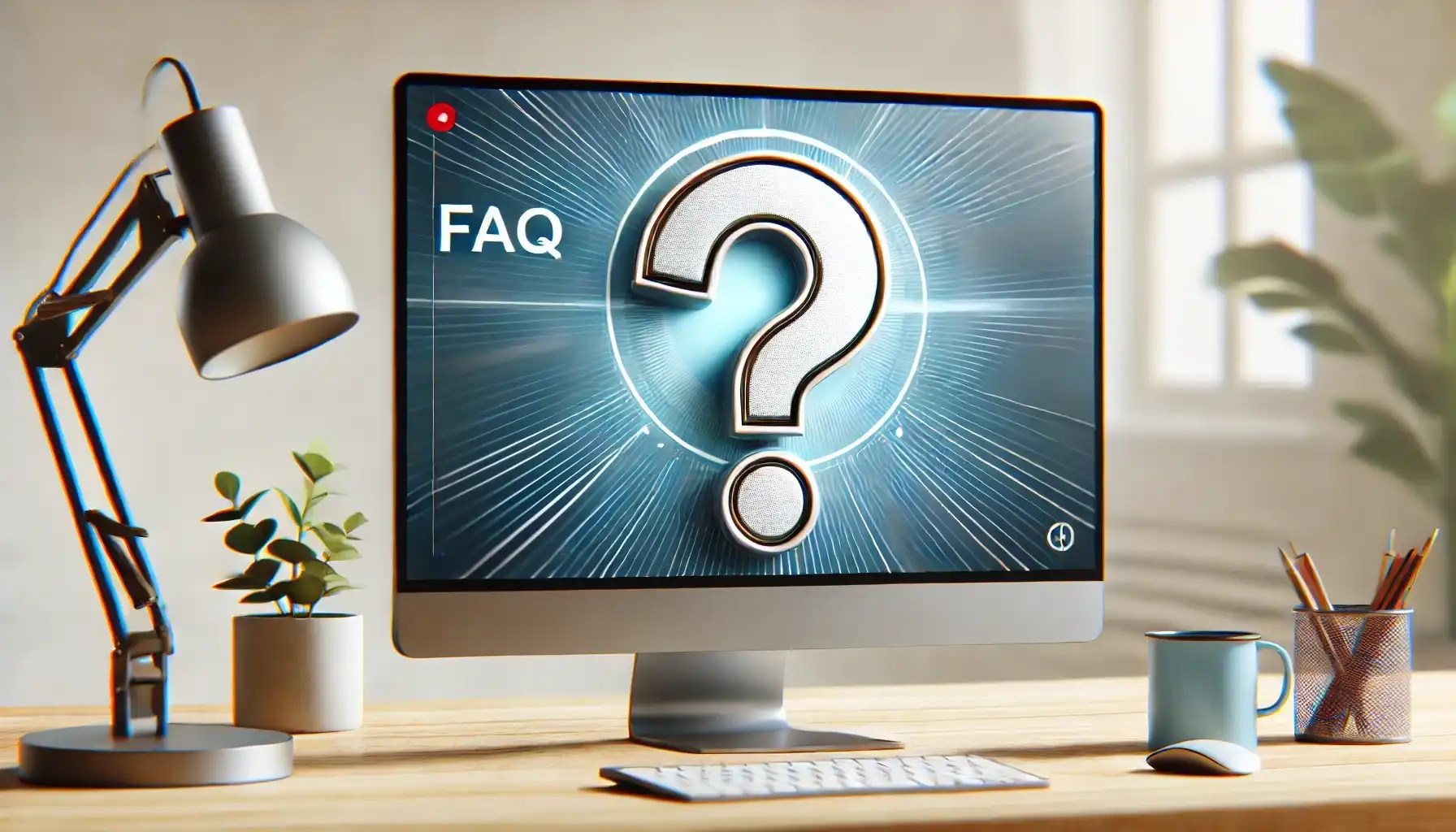
What’s the process for uploading presets into Lightroom?
- Open Lightroom and go to the Develop module.
- On the left panel, right-click on the Presets menu and select 'Import'.
- Find the preset packs on your computer and select them to import.
- After importing, the presets will appear in your Presets menu.
How do I apply presets to a selection in Lightroom?
- Select the photo or photos in your Lightroom catalog to which you want to apply the preset.
- Go to the Develop module.
- Find the preset you want to use in the Presets menu on the left side.
- Click on the preset to apply it to your selected photos.
How to apply saved presets in Lightroom?
- Open the Develop module, where your saved presets are accessible.
- Select the photo you want to edit from your library.
- In the Presets menu on the left, click on the preset you wish to apply.
- The preset settings will be applied to the photo immediately.
Do you need Lightroom Premium to use presets?
- No, you can use presets with the free version of Lightroom.
- However, some advanced features and presets are only available in the Premium version.
- Check the specifics of the presets you are interested in to see if they require Premium.
Conclusion
Learning how to use presets in Lightroom has revolutionized my photo-refining process. It has saved me countless hours and allowed me to achieve a consistent look across my portfolio.
With just a few clicks, I can transform my images, making them more vibrant and polished.
If you’re ready to improve your skills, I suggest checking out my Lightroom course for in-depth training.
And if you want to dive into Photoshop as well, my Photoshop Course will guide you through everything you need to know.
For even more editing power, consider exploring Adobe’s software. You can find out more about Photoshop or Photoshop Lightroom to boost your editing journey.
These tools and resources have been a game-changer for me, and I’m confident they’ll help you take your photo editing to the next level too!
Read more about Photoshop:
















